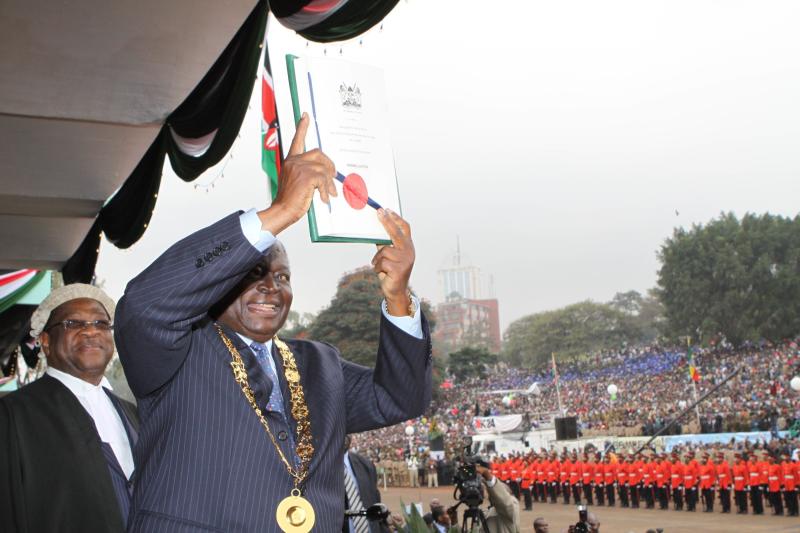×
The Standard e-Paper
Join Thousands Daily

President Mwai Kibaki displays the new Kenyan constitution to the nation after he promulgated and signed it into law at a public function at Uhuru Park, Nairobi [Courtesy]
Among the major milestones President Mwai Kibaki is credited with was the delivery of a new Constitution in 2010.